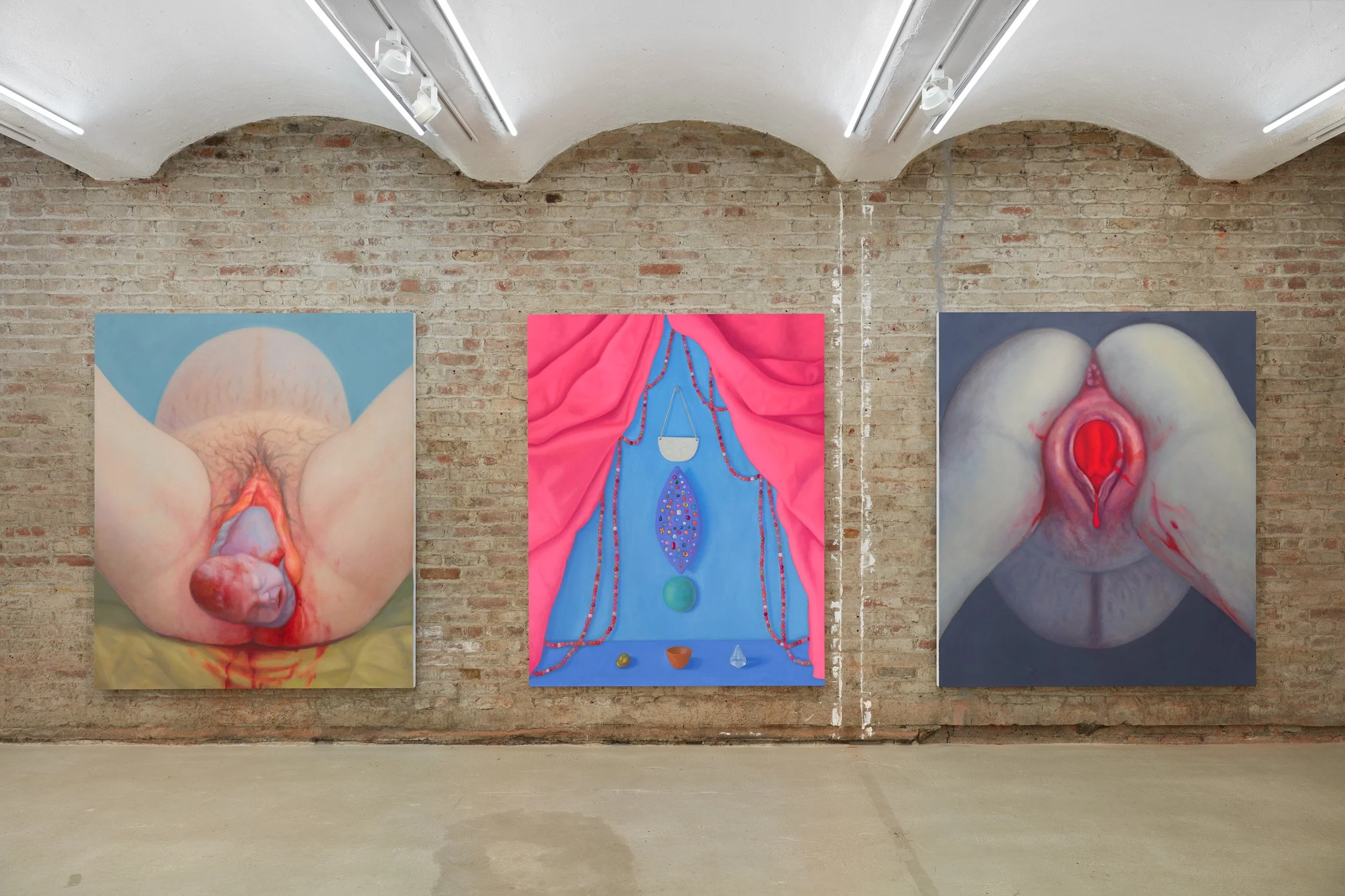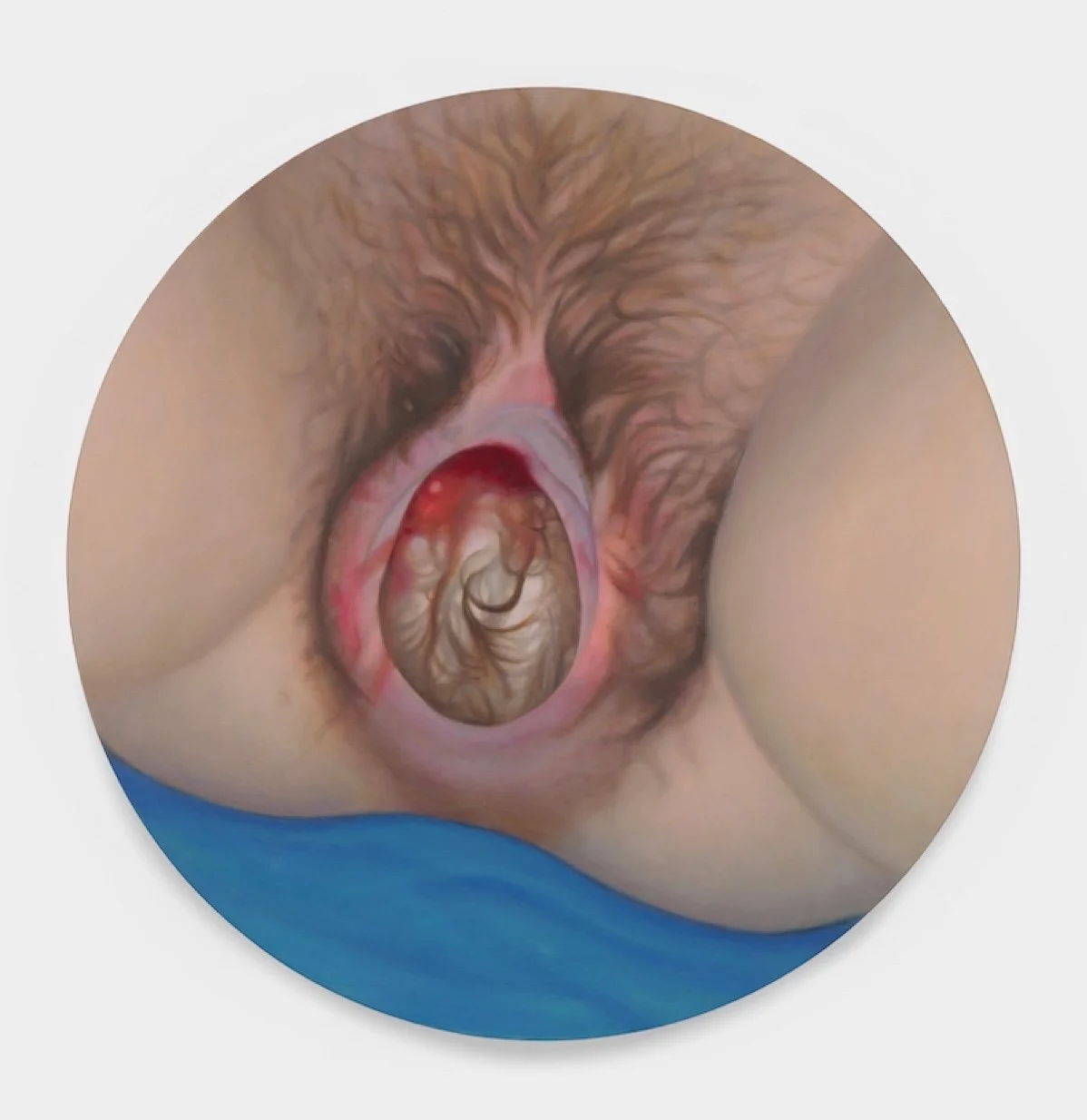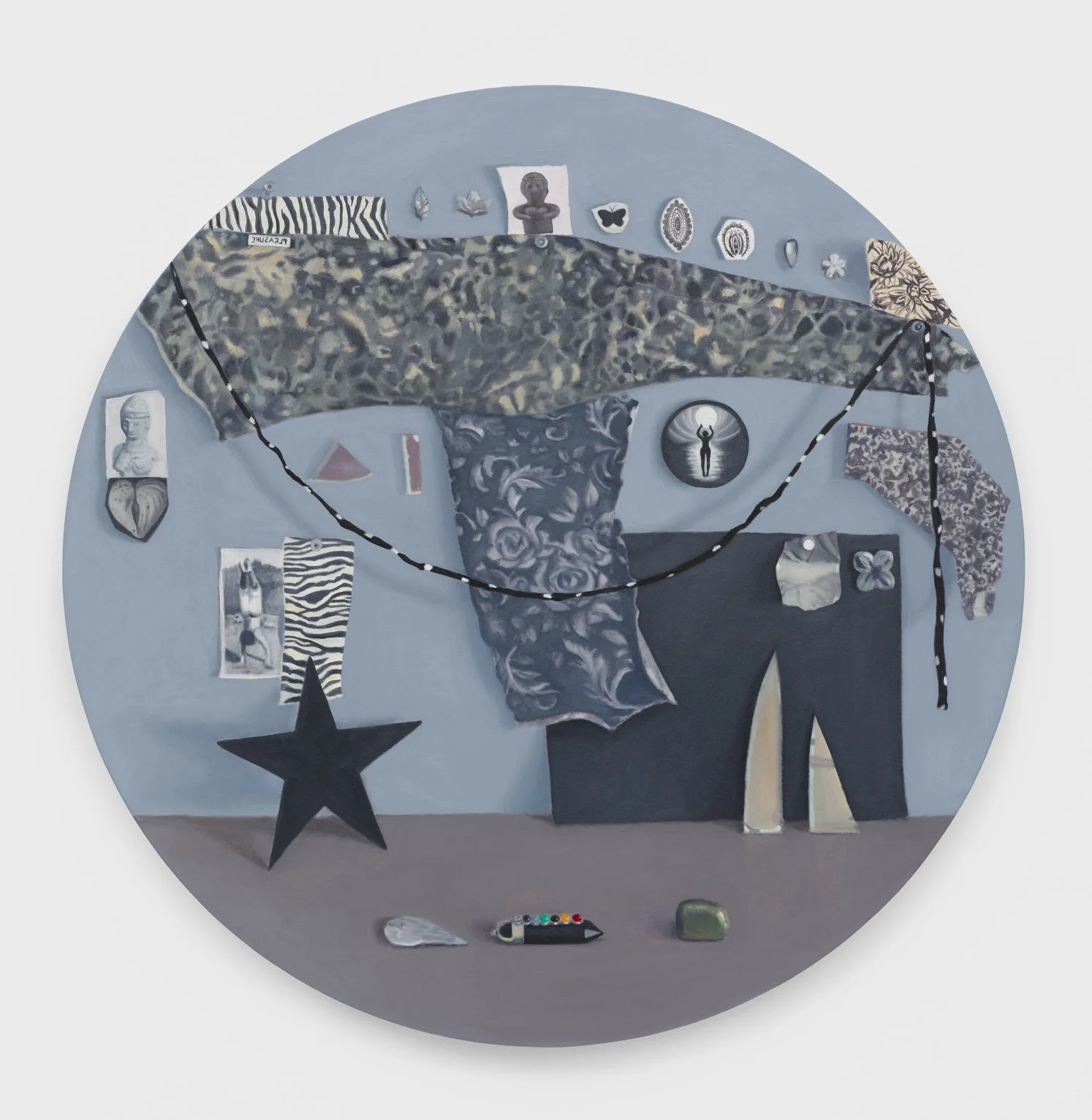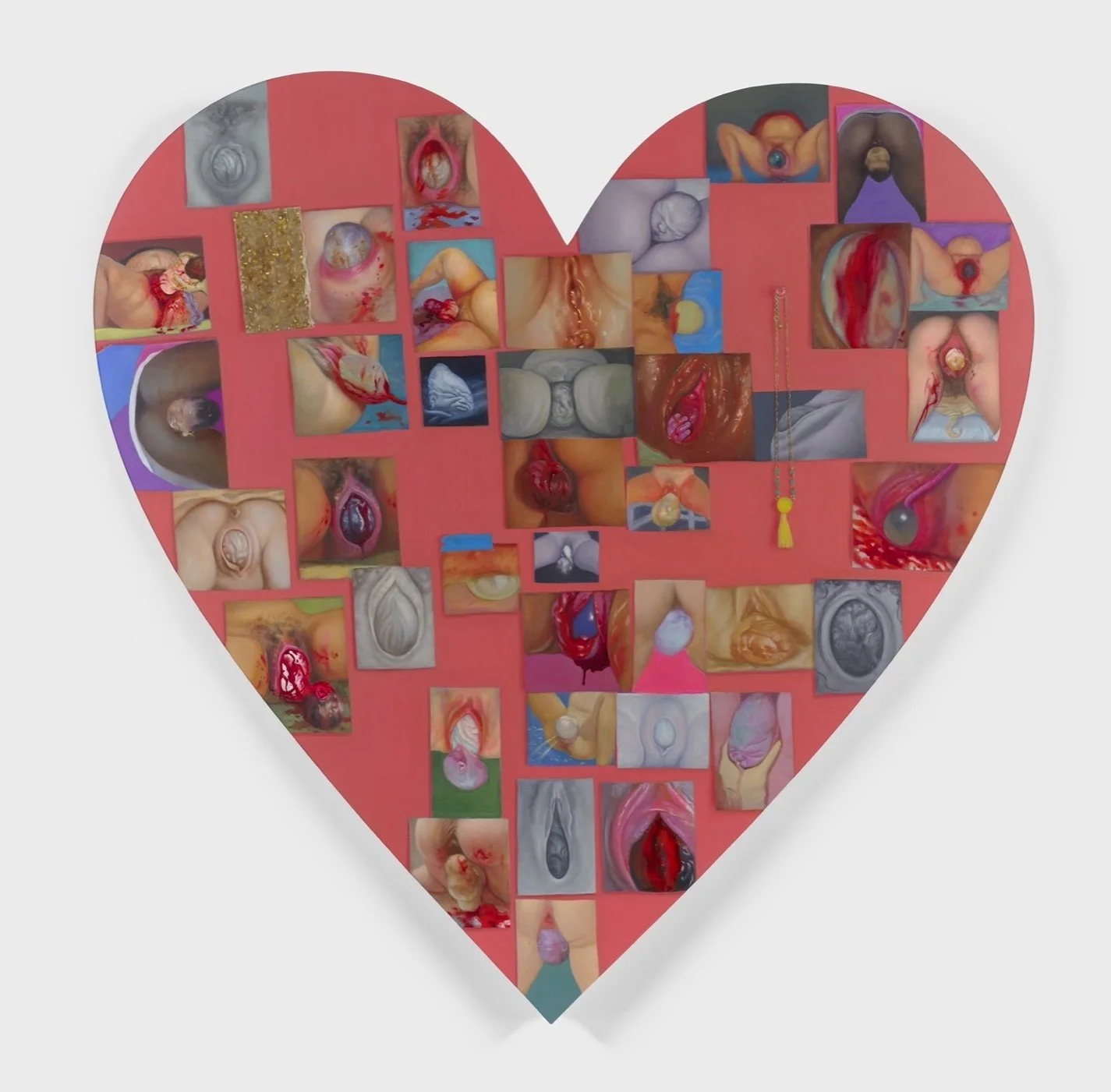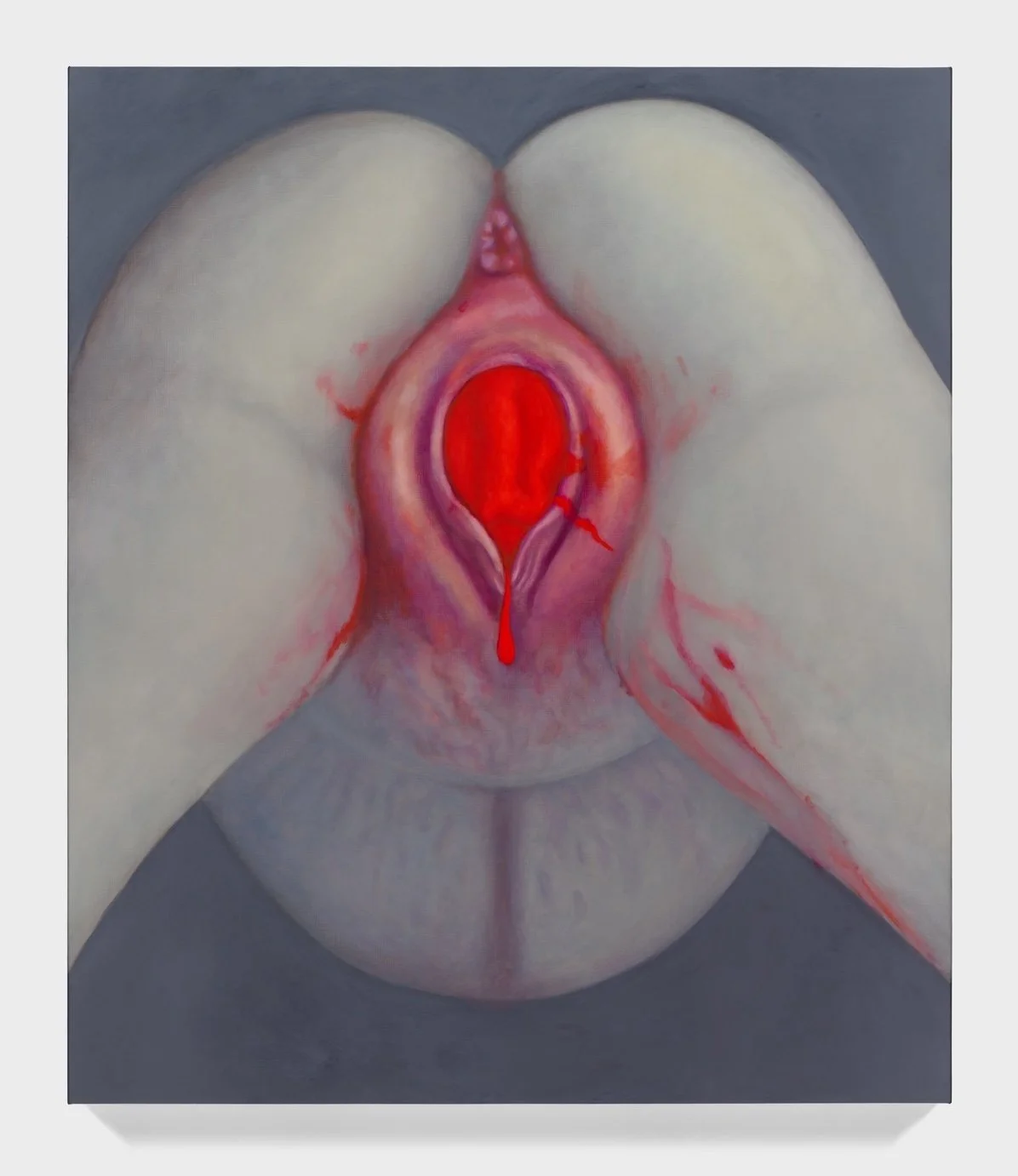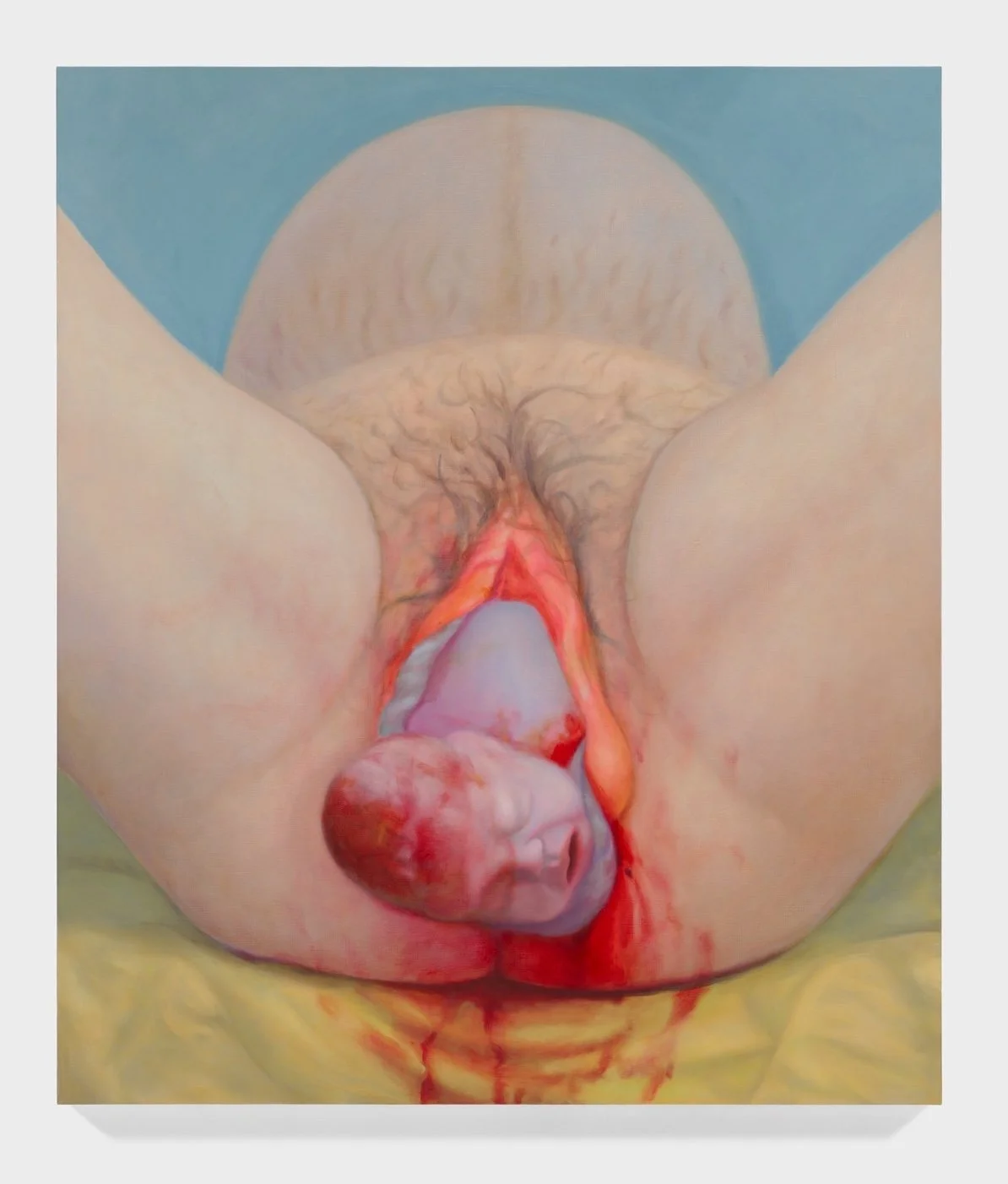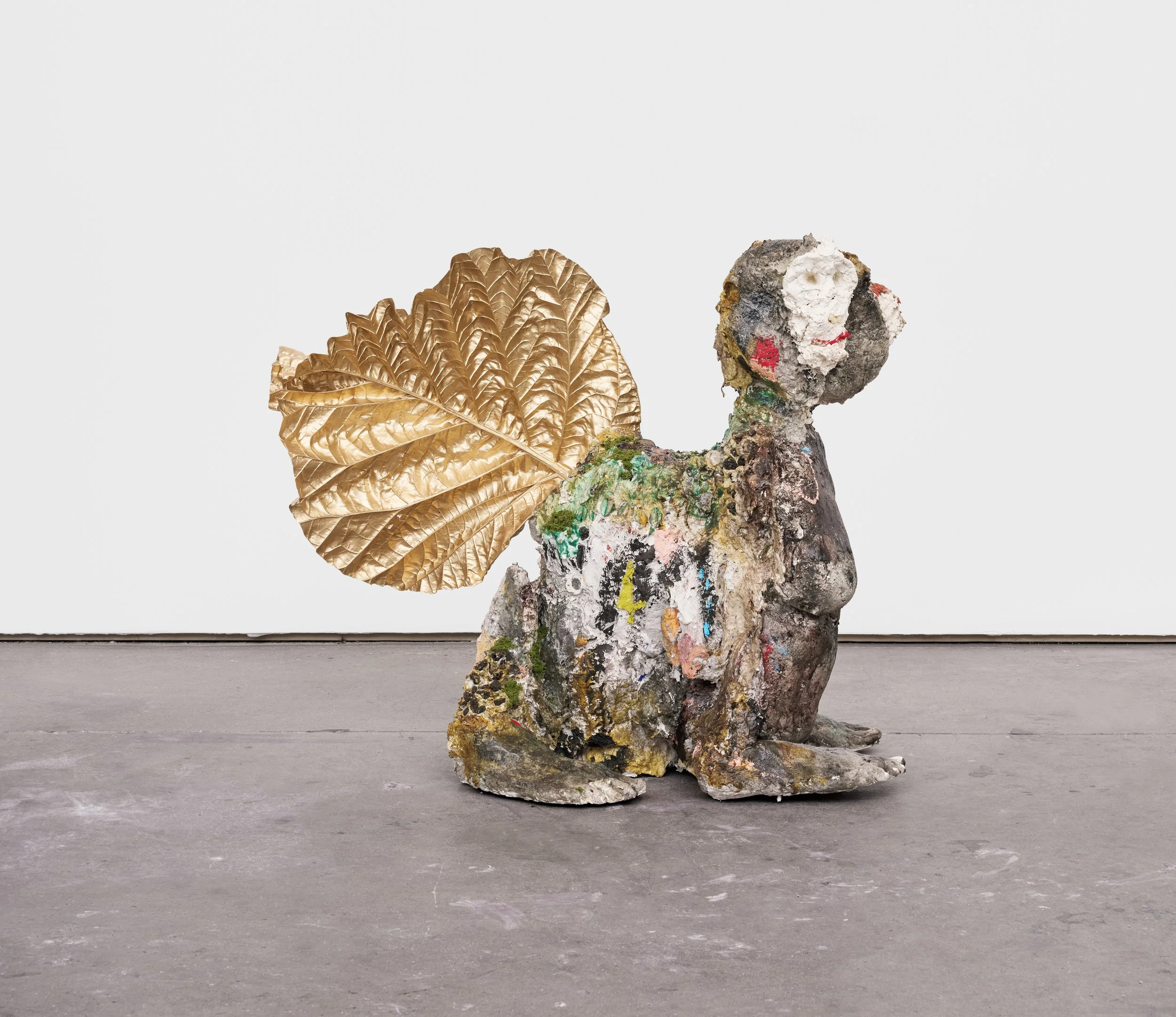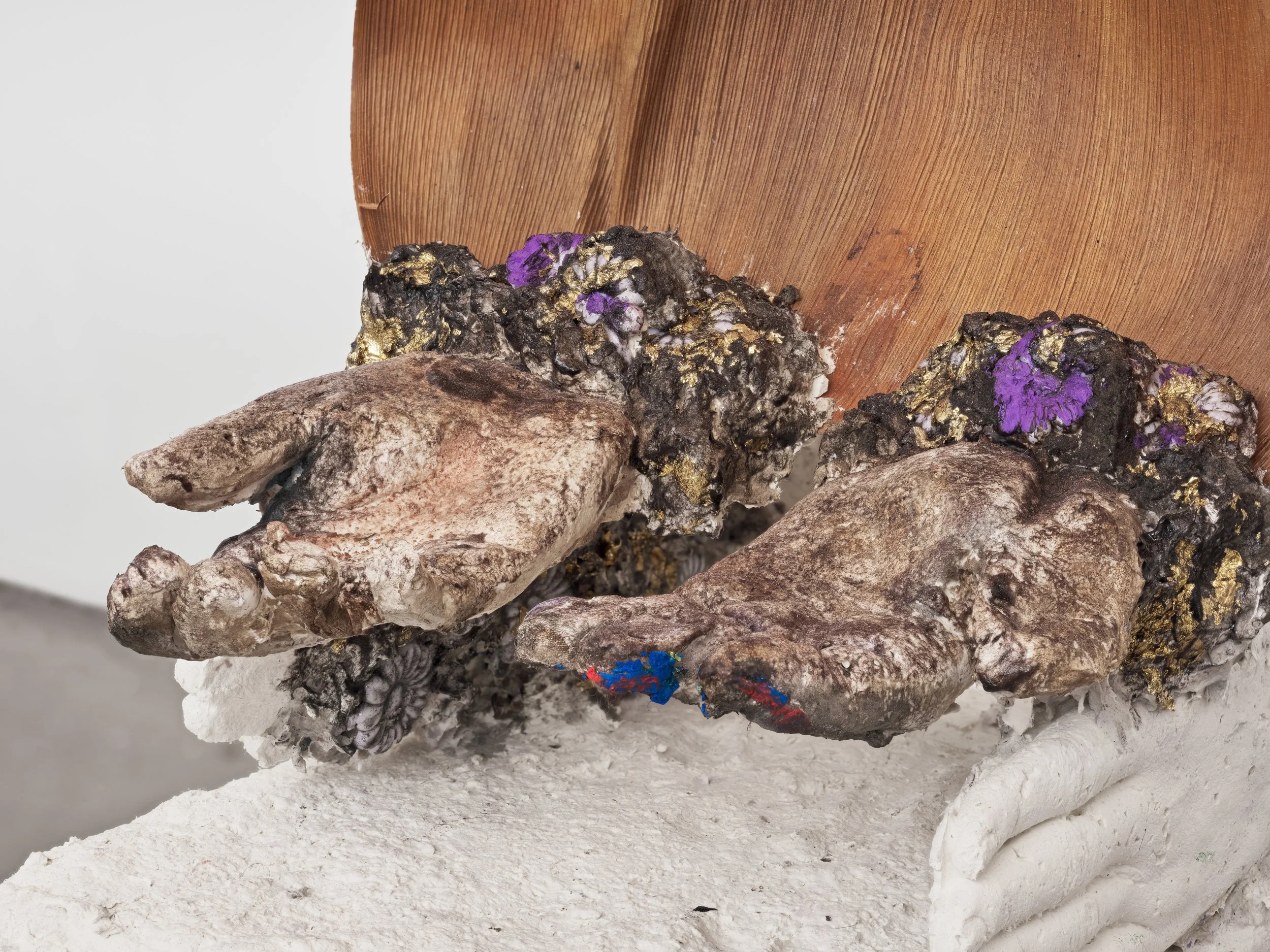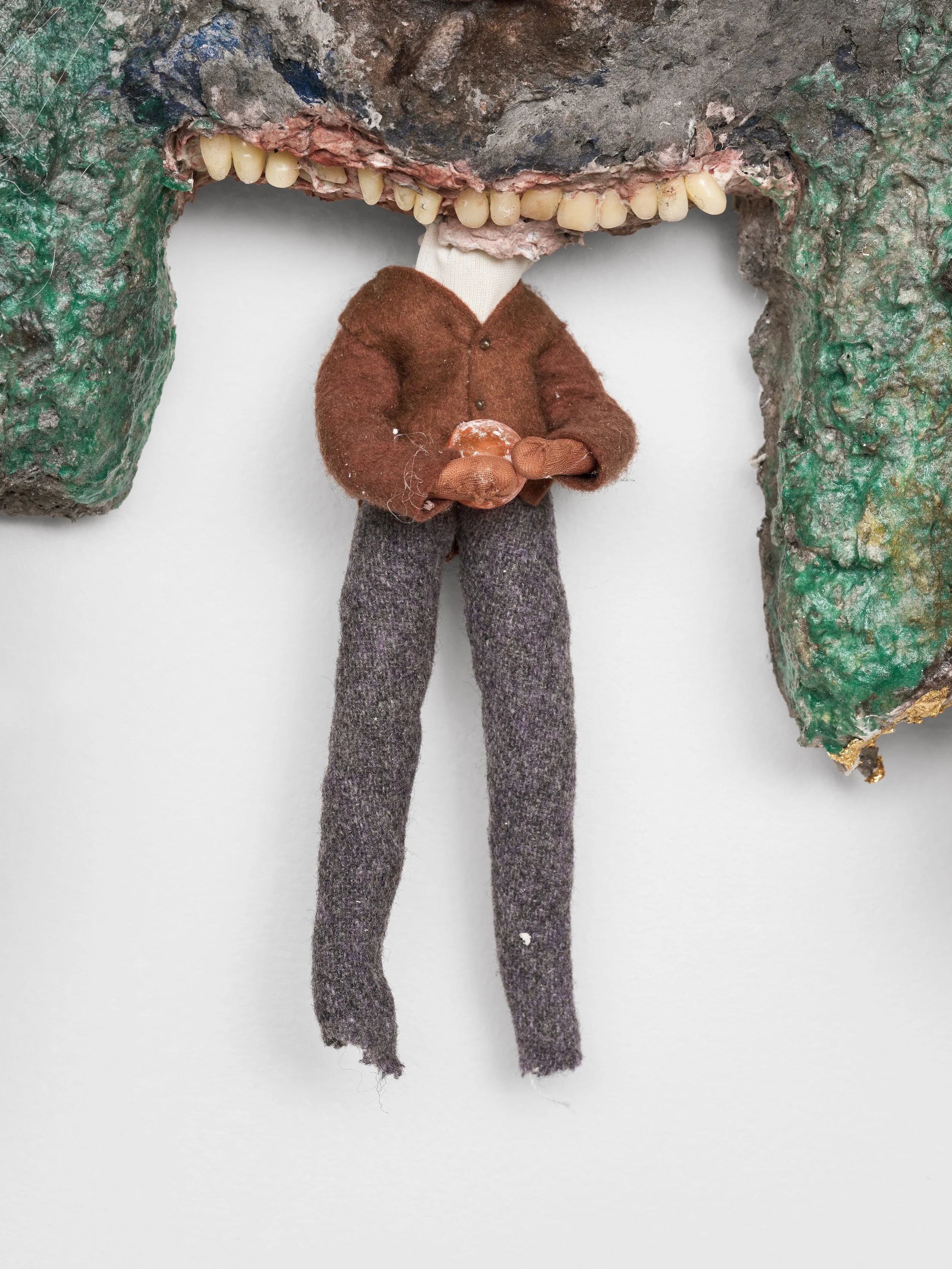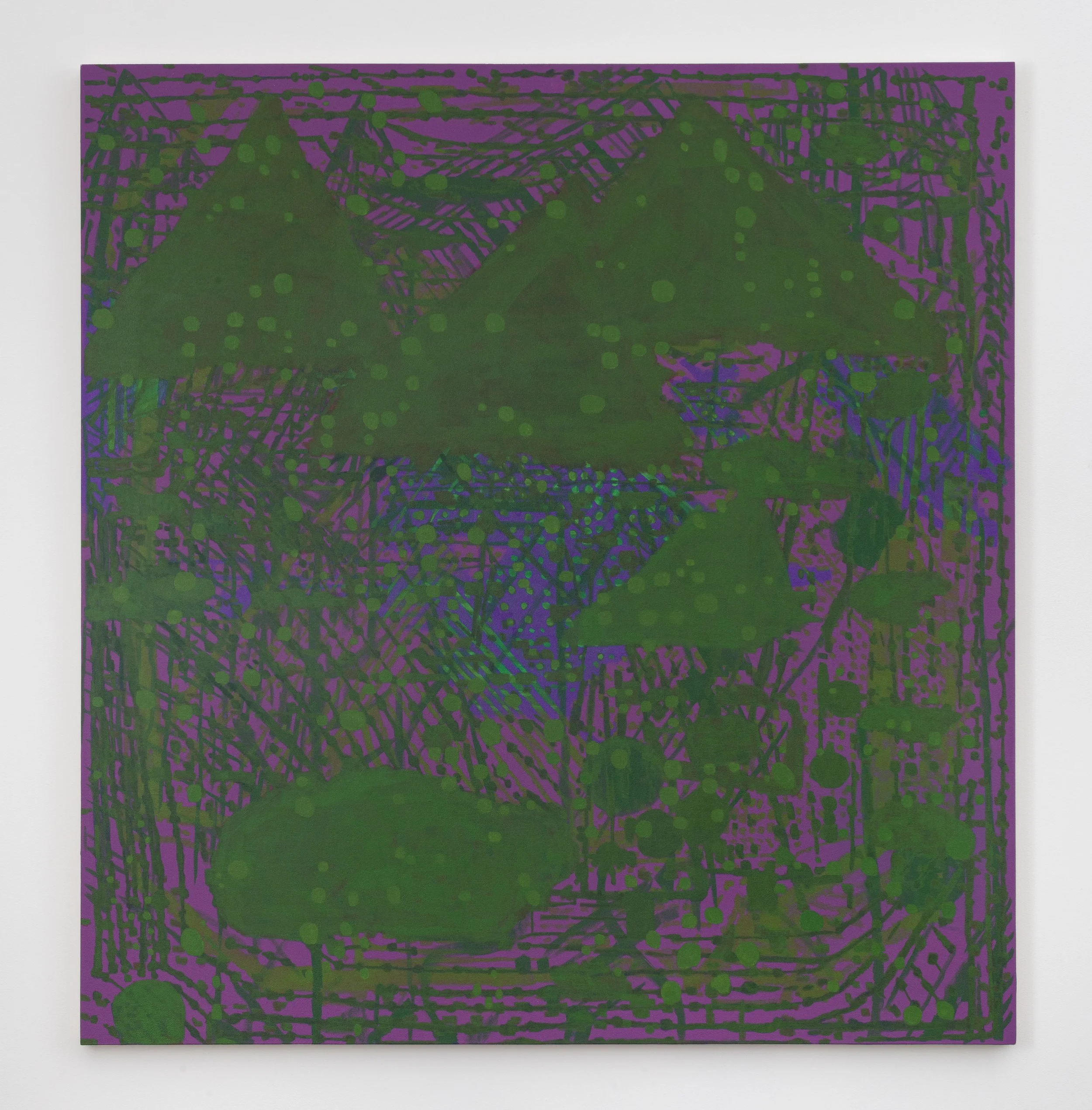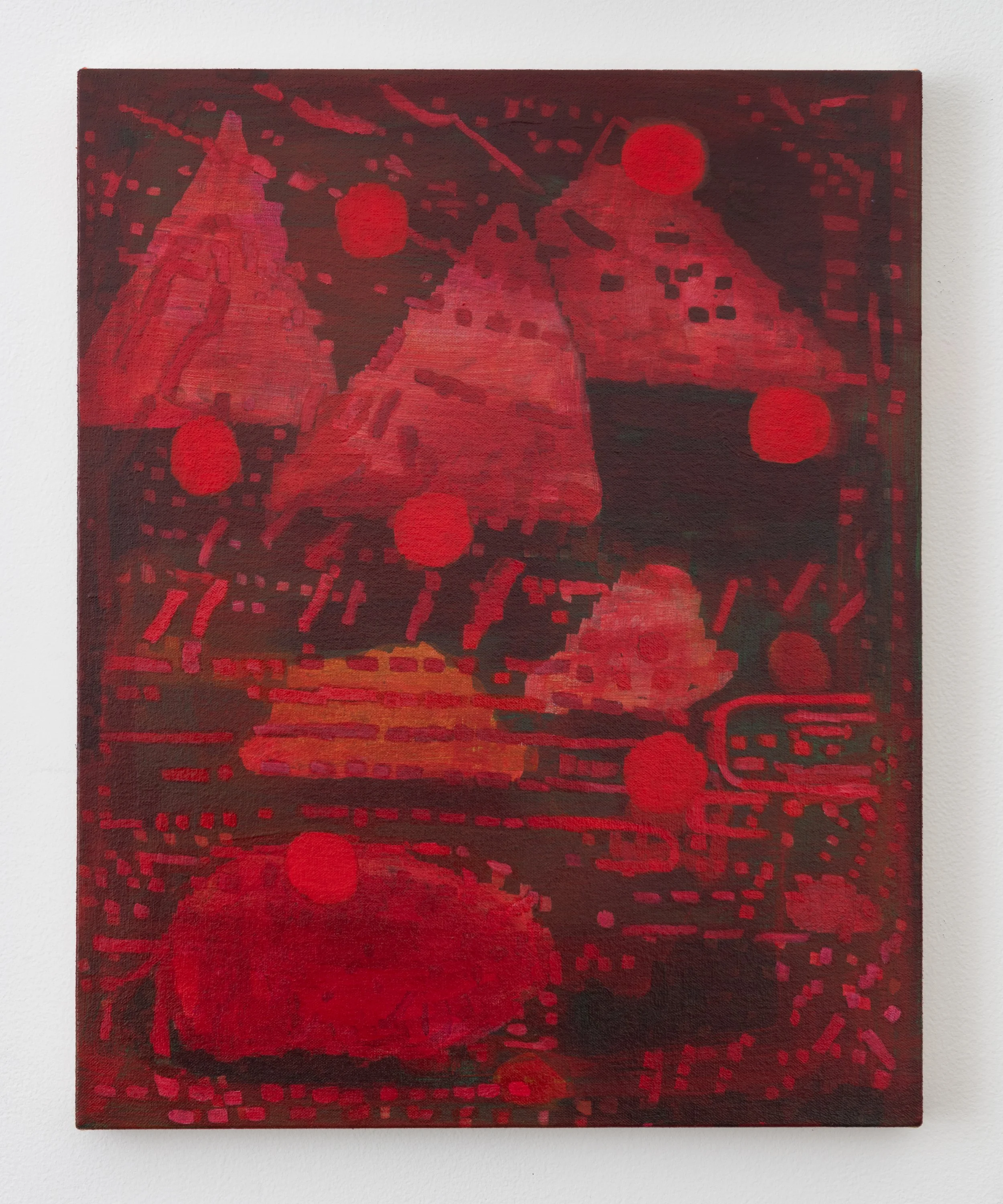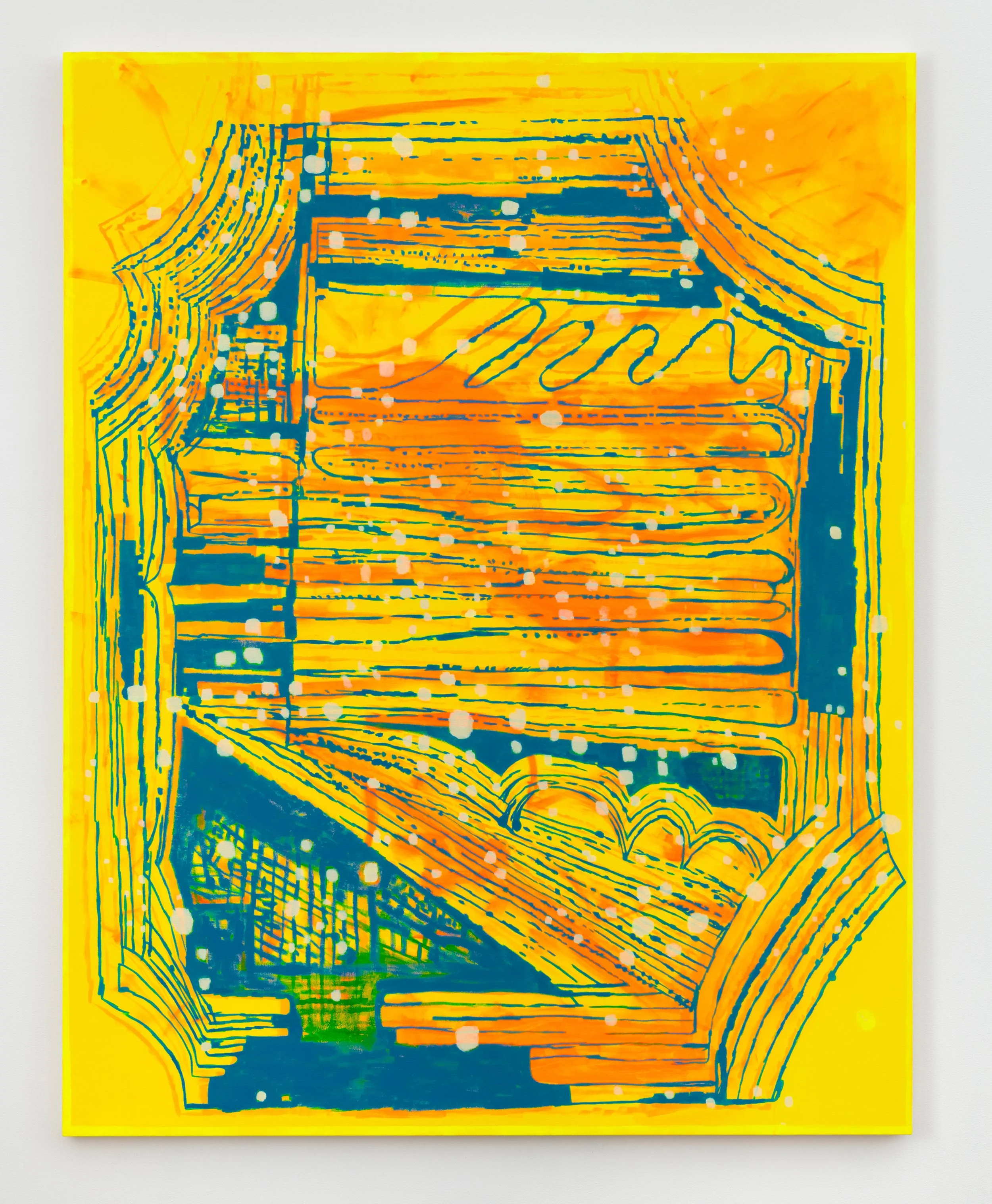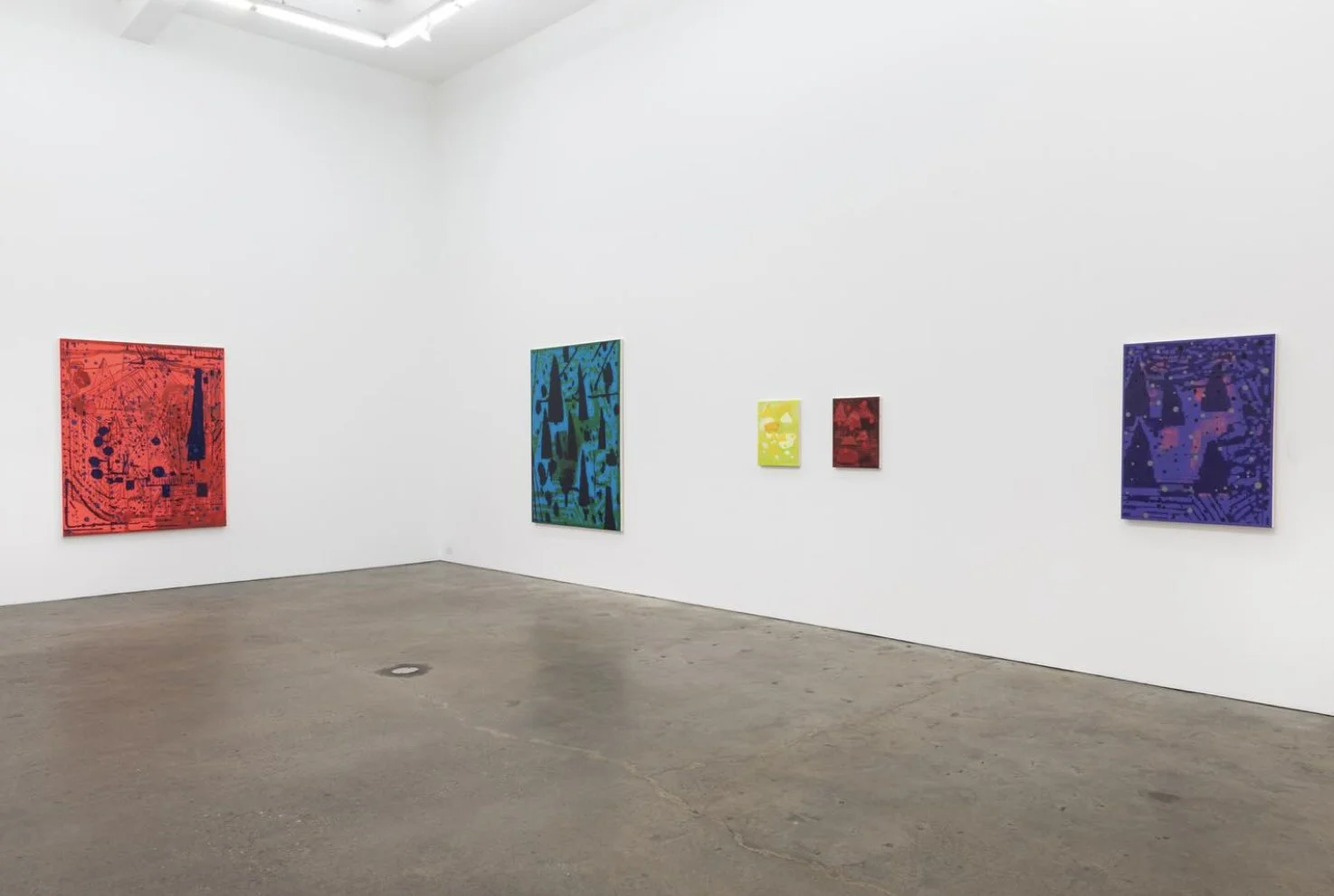EP • REVIEWS
•
EP • REVIEWS •
Clarity Haynes: Origins of Our Unworlding
4.8.24
Wells Chandler April 8. 2024
Installation view of Clarity Haynes: Portals at New Discretions, New York (courtesy of the artist and New Discretions, photo Tom Powel Imaging)
Everyone starts out fisting their mother. An infant’s crowning head transforms a pussy into a size queen chode. Sites of pleasure and sites of pain swell and contract. Daddies and everyone located in-between the gender binary give birth too. A micro-penis becomes a double pronged dildo as newness enters the fold. Either way someone is getting double fisted and so much more in the life-bearing paintings of Clarity Haynes. That is the delightful and polymorphously perverse reality of being born. These paintings reposition birth as a queer incestuous sex act. Collectively we are all complicit in performing this taboo. Perverts and proud of it, the sacred collapses into the profane. It or ‘we’ in the Genesis P-Orridge modality of the pronoun are alive!
Clarity Haynes, “Origin II” (2022) oil on canvas 48 x 48 inches
Haynes’ Portals are sites of our unworlding. Unworlding is a queer endeavor to unbuild, unmake, dismantle and undo. Haynes is an expert in this labour of love. A former Lesbian Avenger, there is not a better sister outsider doing the Lorde’s work. Queer people have a long history of being involved in creating life where others have claimed impossibility to exist. Liberation is a kind of birth. Like birth, liberation is psychologically terrifying and physically painful; it is simultaneously joyful and has a visceral impact on the body. Liberation is often resisted by those who have accepted or have only known oppression as the standard.
Clarity Haynes, “Crowning V”, “Crowning XII” & “Crowning X” (2021, 2022 & 2022) oil on board 6 x 6 inches
Haynes is a freedom fighter and that is not an easy task. Cleaving birth from the domain of heteronormative futurity, Hayne’s paintings are purifying mirrors that reframe gendered trauma, allowing us to experience bodies and rituals in a fresh way. They are literal portals for the mind to unmake implanted agendas that subjugate our ability to inhabit queer futurity. Shown in tandem with the birth paintings, the altars are potent midwives welcoming new life into an affirming realm of queer feminist mysticism.
Clarity Haynes, “Full Moon Altar” (2020) oil on canvas 40 x 40 inches
Gender happens to us. Emerging with their sex obfuscated from interrogation, the babies in these paintings eschew clinical binary assignment. In doing so, Haynes depicts and points to birth as a queer act where our origins are unworlded. Birth is a non-site where we turn a corner.
Clarity Haynes, “Blood Altar” (2023) oil on canvas 40 x 40 inches
The pregnant body is a queer Russian nesting doll of literal gender-fuck fluidity. We are trans-species and breathe in this fluid state, amniotic, to be more specific. The pregnant body queers architecture by unbuilding its relationship from something external to an internal embodied state. Some birthing parent’s choose to eat their baby’s house. This act of cannibalism further dismantles structure. The oral as a site to create new worlds is undone through a clearing by consumption. Placenta as entangled ecology is simultaneously hippie sacrament and the sacred canopy of our unworlded beginnings.
Clarity Haynes, “Big Birth II (Night)” (2022) oil on canvas 70.5 x 60 inches
The birthing parents in these paintings push unworlding further. The cropping of the figure transforms the body into something pod-like and alien as they complete the act of machinery fecundity. Cyborgian electricity of the Wachowski Sisters swirl with an Atwoodian dystopic nativity, allowing ritual to reverberate in the flesh of the cosmic egg. These paintings smell like matrix. Stretched labial folds literally and metaphorically shape shift into gilding that adorns the fabergé extraterrestrial gate. Crowning heads reminiscent of iridescent pearls and gemstones in every color of the rainbow bejewel in full spectrum glory as they hatch. The primordial being is pushed into existence. Haynes’ paintings remind us of the truth that we were all once queer and perhaps that is the reality of our existence and our key to survival.
Clarity Haynes, “Big Birth III (J’s Birth)” (2023) oil on canvas 70.5 x 60 inches
Clarity Haynes: Portals on dis-splayed at New Discretions (515 W 20th, 3rd Floor New York, NY 10011) through April 13. Be sure to pick up her book published in tandem with her exhibition.
Nickola Pottinger’s Totemic Anamnesis
3.8.24
Wells Chandler March 8. 2024
Installation view of Nickola Pottinger like yuh neva lef’ yaad at Mrs. (courtesy of Nickola Pottinger and Mrs. Maspeth, NY, photo Olympia Shannon)
The origin of duppies is found in Central African Bantu folklore. Duppies are manifold. Commonly recognizable as former earthly family members, they appear as the spirit of the deceased. Described as toothy and fused with beastial oddkin attributes, some duppies are viewed as malevolent. The hybridity of their supposed menacing presence, transcends their status to “other” category supernatural beings. Both familiar and extraterrestrial, the duppies in Nickola Pottinger’s work function as totemic protectors. In a variety of spiritual traditions, fierce guardians protect portals to access alternate dimensions. The general class of wrathful protector deities in Tibetan Buddhism, the Mahakalas, come to mind as a cross-cultural kissing cousin.
Nickola Pottinger “Duppy x Redhills” (2023) paper pulp, fiberglass, pigments, oil pastels, gold leaf, felt, tears and a hair bauble 32 x 20 x 8 inches
How duppies came to be is proposed in the Obeah lineage, the African diasporic spell casting and healing tradition. Derived mostly from West African practices and widespread in the Caribbean, in Obeah it is believed that people possess two souls. We are composed of a good soul and an earthly soul. When we die, the two souls part. The good soul ascends to heaven to be weighed. The earthly soul remains with the body in the coffin. If proper etiquette is not followed, the earthly soul escapes and has the potential to manifest as a duppy.
Nickola Pottinger “ Hellshire beach 2” (2023) paper pulp, rocks, pigments, oil pastel, gold leaf and hair baubles 26 x 26 x 16 inches
The etymology of the word duppy can be traced back to Ga. Ga is a Kwa language spoken in Ghana. In Jamaica most African folklore and culture comes from the Ashanti people who are also from Ghana and speak Kwa. The word adope, in the Ga language, translates as dwarf. Dwarves are spirits in Ghanaian folklore.
Alternatively, the origin of the word duppy is attributed to the Akan day Dapaa, signifying duppy as ancestral spirit. Dapaa is durrational, occurring nine days during the Akan month Fwodwo. In the course of this sacred time, ancestral spirits return to their homeland. This custom lives on in Jamaica. Nine days is the period of time to celebrate this tradition and is called Nine Nights.
Nickola Pottinger “Alvernia prep school” (2023) paper pulp, yagua, pigments, oil pastel, gold leaf and paper clips 59 x 13 x 17 1/2 inches
Not coincidentally, there are nine sculptures in Pottinger’s show like yuh neva lef’ yaad at Mrs. Gallery. Tenderness is rooted in the touch that constitutes these duppies, the name of the sculptural forms that populate Pottinger’s spirit world. Born in Jamaica and raised in Brooklyn, Pottinger labors in love nocturnally. Trusting the way things are felt as a way of knowing, Pottinger intuitively and carefully summons the skin of paper pulp familiars.
Nickola Pottinger “Alvernia prep school” (2023) paper pulp, yagua, pigments, oil pastel, gold leaf and paper clips 59 x 13 x 17 1/2 inches (detail)
Storytelling is a tool of agency to counter dominant narratives. Language is structural to reality and it seems to be very important to Pottinger. The Patois title of the show like yuh neva lef’ yaad, which translates to Like I Never Left Home, points to anamnesis in these shape shifting familial works. Her use of Patois language to name, supported by material specificity gestures to this germinal interest. Disembodied teeth appearing in unlikely locales further suggests storytelling. Like an oracle masticating itself into being, their unruly presence easter egged throughout pulpy vascular tissue devours, adorns and sometimes smiles back.
Nickola Pottinger “Duppy x Redhills” (2023) paper pulp, fiberglass, pigments, oil pastels, gold leaf, felt, tears and a hair bauble 32 x 20 x 8 inches (detail)
The body is used indexically. Pottinger’s hands and soles, repeatedly casted, embed these works with supplication and spirit. Channeling in the still darkness of night, remembrance and storytelling are aided by the transformation of structural language. Composed of recycled family ephemera, Pottinger metamorphosizes records that structure earthly reality, cocooning cultural and spiritual heritage in the process. There is a kind of literal re-spelling that occurs in the linguistic reconfiguration of pureed sensitive documents to reanimate through recollection.
Nickola Pottinger “Alvernia prep school” (2023) paper pulp, yagua, pigments, oil pastel, gold leaf and paper clips 59 x 13 x 17 1/2 inches (detail)
For Plato, recollecting is linked to learning. The extraterrestrial condition and original knowledge is accessed through a “going back.” This is aided through physical objects to help the soul withdraw into itself. The teeth and familial archives in Pottinger’s work talismanically aid this process through repossession and rediscovery. Since Junior High, Pottinger notably collected diagnostic casts of teeth from her mother’s dental lab. Archetypally it is through the repetition of initiation that the artist as novice discovers that they have already been a mythical ancestor located in mythical time. The retention and remembrance of this anamnestic state cyclically lives in Pottinger’s deeply personal and spiritual art.
In Being and Time, Martin Heidegger describes human existence as “being unto death.” He also states that death is, “as the shrine of Non-Being, hides with itself the presence of Being.” It is through understanding death that we take possession of ourselves and consequently open to Being. Thus Being is the act of dying. Heidegger’s proof of the paradoxical coexistence of death and life via being and nonbeing populates the charged funerary geography of Pottinger’s symbolically potent work.
Nickola Pottinger “Genkle Jesus meek and mild” (2023) wood, paper pulp, pigments, oil pastels, gold leaf and hair clips 16 x 16 x 12 inches
Nickola Pottinger: like yuh neva lef’ yaad continues at Mrs. (60-40 56th Drive Maspeth, NY 11378) through March 9.
EJ Hauser is The Forge and The Crucible
3.5.24
Wells Chandler March 5. 2024
EJ Hauser, “Cosmic Collision” (2023-2024) acrylic on canvas 63 x 60 inches
EJ Hauser is a smith fortified in the alchemist’s flask. The nomadic condition of the smith and their quest for raw material for work, dislocates, allowing for encounters with myths, rites and metallurgic mysteries. This ensemble allows for a vast new mental world to access the anthropocosmic.
Mineral substances from the earth that compose paint are sacred. Painting as metallurgy is not dissimilar to gardening. Like seeds, ores grow in the belly of the earth. It is from the molten core that the creation of the world starts. Every construction or fabrication must operate from their center. The ritual production of fire reproduces birth. The grow room knows that the smith is a miner unfolding an ancient subterranean embryology. Ecosystems expand from their borders where novelty reigns supreme. What are the lambic conditions necessary for life? What kinds of inner looking is required for growth? What do the edges of our traces feel like as we expand?
EJ Hauser “Cherry Haze” (2023-2024) acrylic on canvas 20 x 16 inches
It snowed today. Atmospheric conditions cultivate an auspicious set and setting for a pilgrimage to the gallery. In the grotto shrine at Derek Eller, I find myself standing in the center of the range; rainbow mountains majesty as far as the eye can see. Morse code ticks across the glyphic compositions like staccato notes of icaros sung in polysymphonic union. The hills are alive.
Mountains are ancient. They connect us to the infinite continuum of time. They are cairns of the temporal. As natural borders they delineate boundaries and are destinations for the seeker. Van Gogh’s queer hay bales swaddled in pulsating aurora borealis light, crystalline talismans protect and heal, here we are safe and surrounded by ancestors. In Golden Ticket, a shield opens to the heavens. Up is the way out.
EJ Hauser “Golden Ticket” (2023-2024) acrylic on canvas 70 x 55 inches
Looking below is aided from above. Charged with the celestial, aeroliths fall to earth. Cross culturally, meteorites were worshiped and associated with the divine. Prior to smelting ferrous ores, gazing to the cosmos for tools was the standard. Meteoric iron is suggested in the Sumerian word AN.BAR, the oldest word to designate iron is composed of the pictographs sky and fire. Celestial metal and star metal are common translations.
Installation view of EJ Hauser: Grow Room at Derek Eller Gallery, New York (courtesy of Derek Eller Gallery, photo Adam Reich)
The longer one quests, the softer the edges of once nameable things become. Outdated maps fail us. Hazy elemental forces float suspended in veils. Finding ourselves in the quiet places, the ability to point concretely to what was once absolute shifts. Geography can be used to map change. That is why we sojourn to far off places. Retracing breadcrumb trails to our origins inevitably leads us to discovery.
Edges are places where opposites meet. External landscapes signify internal expansive realities. The simultaneity of the latin phrase the coincidentia oppositorum, translates as the union of opposites. It is in this deeply queer and mystical structure that Hauser forges a vision for our place in the cosmos.
EJ Hauser Untitled Grow Room Series #4, #5, & #6 (2023) permanent marker on paper 11 x 8.5 inches
EJ Hauser: Grow Room continues at Derek Eller Gallery (300 Broome Street New York, NY 10002) through March 9. Be sure to pick up their book published on the occasion of their Fall 2023 exhibition, Song of Summer, at Haverkampf Leistenschneider in Berlin.
